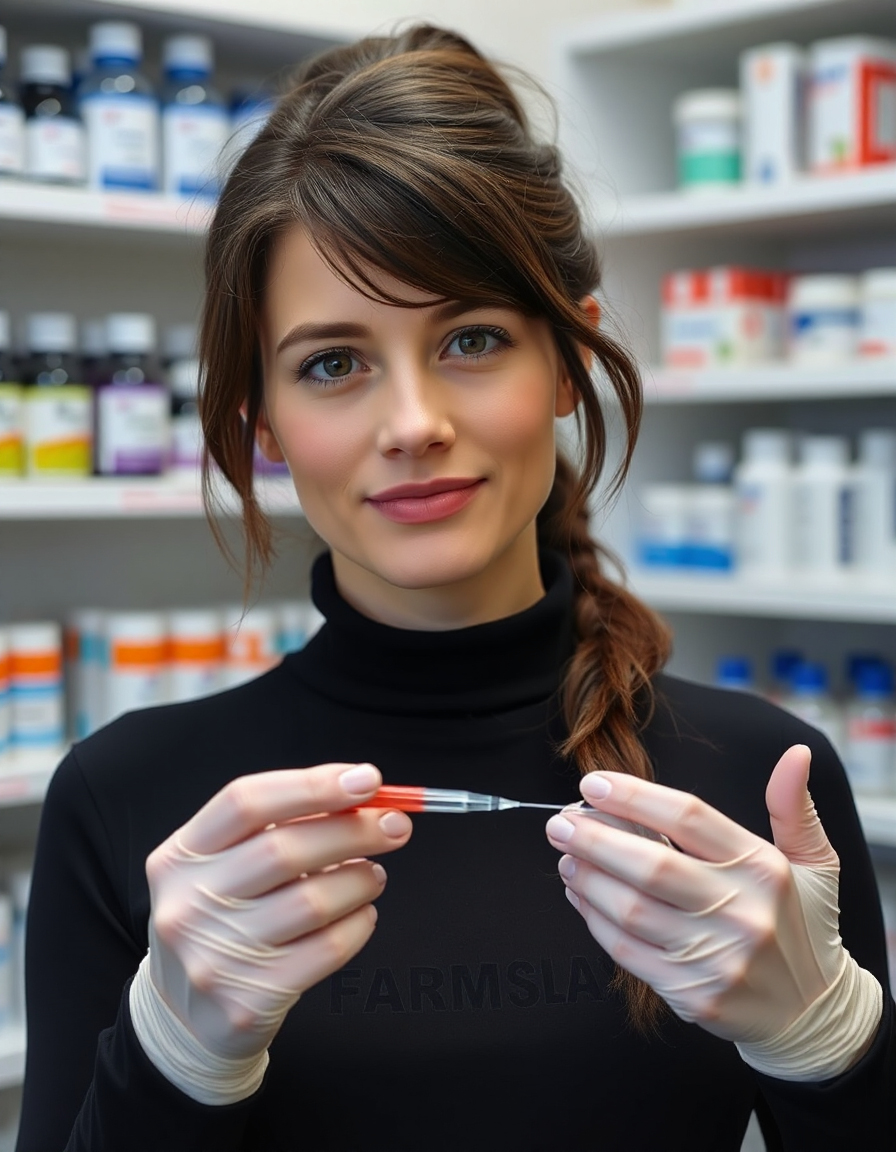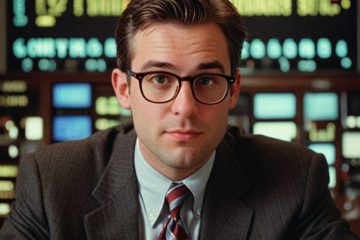Elizabeth Holmes, the Illusion of Innovation, and the Tech That Never was BUT now?

The Theranos Enigma: Elizabeth Holmes, the Illusion of Innovation, and the Tech That Never Was
The story of Elizabeth Holmes and Theranos is one of ambition, deception, and failed promises. It’s a cautionary tale that continues to capture the world’s attention, particularly for anyone in the tech, health, or entrepreneurship sectors. With its headline-grabbing claims and eventual unraveling, the Theranos saga has raised questions about the ethics of innovation, the dangers of overpromising, and what happens when hype overtakes reality.
In this post, we’ll delve into the Theranos story, focusing on how Elizabeth Holmes’s vision for revolutionary blood testing crashed and burned. We’ll also explore how the tech world has evolved since Theranos, and discuss whether modern advancements in AI, particularly with the rise of Omniverse technology, could help avoid similar failures in the future.
Understanding the Theranos Vision: The Promise of Edison
Theranos was founded in 2003 by Elizabeth Holmes, a Stanford dropout who had grand ambitions to revolutionize blood testing. Holmes promised that her company could perform hundreds of diagnostic tests using just a few drops of blood from a simple finger prick. This technology, dubbed “Edison,” was supposed to disrupt the medical industry, providing fast, affordable, and accessible blood tests that could be performed at home, pharmacies, or even remote locations.
The Edison’s alleged capabilities included:
- Minimally Invasive: Finger-prick blood tests that were less painful and more convenient than traditional blood draws.
- Faster Results: The device promised to deliver quick results, potentially saving lives by speeding up diagnosis and treatment.
- Lower Costs: Theranos claimed that by miniaturizing the testing process, they would significantly reduce the cost of blood tests.
- Point-of-Care Testing: The Edison was designed to be portable, allowing for diagnostic testing outside traditional labs.
The Illusion of Innovation: Technological Failures and Fraud
Unfortunately, the reality of Theranos’s technology did not align with its promises. The Edison device, although highly ambitious, faced numerous technical and scientific challenges that could not be overcome.
Technological Flaws in Edison:
- Sample Volume Issues: Capillary blood obtained from a finger prick is inherently small, which made it difficult to run accurate tests, especially for complex assays.
- Miniaturization Challenges: The attempt to condense complex laboratory equipment into a small, portable device proved to be technologically impossible for Theranos at the time.
- Accuracy and Precision Problems: The Edison produced inconsistent and often inaccurate results, which could lead to dangerous misdiagnoses.
- Reliance on Other Technologies: As the Edison faltered, Theranos began using third-party machines, contradicting its own claims that they had developed proprietary technology.
Scientific and Engineering Hurdles:
- Immunoassay Complexity: Many tests required precise immunoassays, which are difficult to miniaturize and prone to error in smaller formats.
- Microfluidic Challenges: Controlling the flow of tiny blood samples in a microfluidic system is highly complex, and Theranos failed to meet these technical demands.
- Calibration Failures: Proper calibration of medical devices is crucial for reliable results. Theranos lacked the necessary quality control measures to ensure consistent performance.
The Culture of Deception at Theranos
Holmes’s drive to push forward with her vision led to a corporate culture that was rife with secrecy, intimidation, and unethical practices. Theranos suppressed any criticism of its technology, and those who raised concerns were silenced or fired. This secrecy extended to misleading public demonstrations, where only carefully selected tests were shown to work, creating a false impression of the device’s capabilities.
Holmes herself was particularly notorious for disregarding the advice of qualified scientists and engineers, opting instead to push for results that fit her vision, regardless of scientific realities. This culture of deception not only led to the downfall of Theranos but also caused harm to countless patients who relied on inaccurate test results.
The Aftermath: Legal, Ethical, and Financial Consequences
In the wake of the revelations about Theranos’s fraud, Elizabeth Holmes faced legal charges, and the company was dissolved. This scandal served as a stark reminder of the dangers of prioritizing innovation at the expense of rigorous scientific validation. It also raised important questions about the ethics of entrepreneurship in the tech industry, particularly in sectors as critical as healthcare.
Key Lessons from Theranos:
- The Importance of Validation: Thorough, independent validation is essential, especially in fields that directly impact human health.
- The Need for Regulation: Strong regulatory oversight is crucial to protect consumers and ensure that new technologies are safe and effective.
- The Dangers of Overhyping Innovation: Unrealistic claims can lead to significant financial and personal harm.
- Whistleblowing Matters: The role of whistleblowers, such as Tyler Shultz, was pivotal in bringing Theranos’s fraud to light.
Other Companies Pursuing Similar Innovations in Blood Testing
Despite the scandal surrounding Theranos, the concept of revolutionizing blood testing with less invasive methods has not disappeared. Several companies are still striving to achieve similar breakthroughs in blood diagnostics, but with more scientific rigor and transparency.
1. Tasso (Tasso, Inc.)
Tasso is a company focused on creating a non-invasive, painless alternative to traditional blood draws. Their Tasso device, a patch-like system, enables patients to take blood samples at home without the need for a needle. The device uses a small lancet to draw blood and then stores it in a vial, which is then sent to the lab for analysis. Unlike Theranos’s approach, Tasso is taking a more cautious approach, working on integrating this device into existing lab-testing workflows rather than trying to create a fully standalone system.
2. Lucira Health
Lucira Health has developed a portable and rapid molecular diagnostic testing platform. They offer a single-use test for COVID-19, where a sample of nasal swab is processed using a compact device that provides results in under 30 minutes. While Lucira’s platform isn’t specifically designed for blood testing, their approach to miniaturizing diagnostic tests could be a step in the direction of mobile health diagnostics. Their focus on making diagnostic tests accessible outside the clinical setting mirrors some of Theranos’s original goals.
3. Biocept
Biocept has developed a liquid biopsy technology that allows for the detection of cancer biomarkers from blood samples. While this isn’t directly related to the finger-prick blood test that Theranos envisioned, it demonstrates how blood testing can be innovated using modern technology. Biocept uses specialized tests to extract and analyze circulating tumor DNA (ctDNA), providing valuable cancer insights without the need for invasive procedures.
4. LabCorp and Quest Diagnostics – Home Test Kits
While not as ambitious as Theranos’s vision, two of the largest U.S. diagnostic companies, LabCorp and Quest Diagnostics, are focusing on expanding at-home blood test kits. These services provide a way for people to collect blood samples at home and send them to a lab for analysis. These innovations focus on improving accessibility to medical testing and enhancing convenience without sacrificing accuracy.
5. Everlywell
Everlywell is another company that has developed at-home health test kits, which include blood testing for a variety of conditions. They offer tests ranging from cholesterol levels to hormone levels, allowing consumers to collect samples from the comfort of their homes and send them to certified labs for analysis. Everlywell’s approach emphasizes clear labeling, transparency, and adherence to scientific standards, something Theranos neglected.
Could Omniverse and AI Help Prevent Another Theranos?
With advancements in AI, especially in platforms like Omniverse, can we now create virtual testing environments to validate new technologies before they are released to the public? The answer is a hopeful one. Omniverse, a platform by NVIDIA, enables the creation of digital twins—virtual replicas of physical systems that can be used for simulation, testing, and development. This technology could be pivotal in testing the feasibility of complex devices like the Edison before they hit the market.
How Virtual Testing Could Have Helped:
- Simulating Blood Tests in a Digital Environment: AI-driven simulations could have modeled the performance of the Edison device, helping Theranos identify issues with accuracy, sample size, and other challenges before building the physical prototype.
- Predicting Interference and Contamination: Virtual models could predict how capillary blood samples interact with the device, helping engineers troubleshoot potential inaccuracies.
- Revising Designs Iteratively: Instead of relying on physical trials, Omniverse could allow for rapid iterations of the design, saving time and resources.
The Tech That Never Was: A Missed Opportunity for Innovation
Theranos’s failure highlights a significant missed opportunity for healthcare innovation. The idea of using minimal blood samples for diagnostic testing is not inherently flawed; rather, it was the rushed execution and lack of scientific rigor that led to the collapse. If Theranos had taken a more measured approach, perhaps using virtual testing methods and working within the bounds of what was scientifically possible at the time, it could have created a groundbreaking technology that truly transformed healthcare.
Looking Ahead: How We Can Learn from Theranos
The Theranos case serves as a powerful lesson for entrepreneurs, investors, and the tech community. It shows that innovation must be built on a foundation of scientific credibility, transparency, and rigorous testing. As AI and Omniverse technology continue to evolve, they present new opportunities to bridge the gap between visionary ideas and actual, functional products. By embracing virtual testing and data-driven approaches, future innovators can avoid the mistakes of the past and build technologies that live up to their promises.
Final Thoughts: Moving Beyond the Illusion of Innovation
While the story of Theranos may be one of deception and failure, it also offers an important lesson for the tech world: no matter how grand the vision, innovation must be grounded in scientific truth and reality. In today’s rapidly evolving technological landscape, we now have the tools—like AI and Omniverse—to test and validate ideas before they become products. If used responsibly, these technologies could ensure that the next big breakthrough truly lives up to its promise.
By learning from the mistakes of Theranos, we can shape a future where tech companies prioritize scientific integrity, transparency, and ethical responsibility above all else.
Want more AI-driven finance tips? Subscribe to our blog and stay ahead of the game!
Disclaimer: This blog article is for informational purposes only and should not be considered financial advice. Everyone’s financial situation is unique. Always consult with a qualified financial advisor or planner to assess your individual circumstances before making financial decisions.



0 Comments